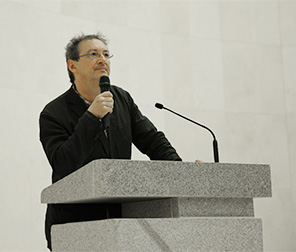home > ARCHIVE > 2014 BCFC > 워크숍
워크숍

Renaissance Sacred Music
I believe Tudor pitch was higher than A = 440, and therefore some degree of transposition up is required. Voices then were essentially the same as ours, but they were trained differently if they were trained at all, and we have problems in particular with the countertenor part which, as a matter of interest Lassus once described as ‘the part that often makes trouble for singers’ and wrote some experimental three-voice pieces leaving it out. To transpose some pieces but not others to suit ourselves is obviously a nonsense in theory, though in practice one might be wise to be pragmatic. But with good singers almost anything can be attempted. The Tallis Scholars are prepared to sing Gibbons's peerless Hosanna to the Son of David in E flat, rather than in C; we are also prepared to sing Tallis's colossal Gaude gloriosa in E flat, rather than C.
Seating, Placement, and Vital Colors for Your Choir
An Approach to the Placement of Individual Voices- Choral Schools and Procedures
- “Blend”
- Weston Noble Approach
- Voices—variables
- Seating Your Choir
- Voice Matching and placement

FOUR PHASES OF REHEARSAL
- Scan the piece: “Bird’s eye view”
- Learn the notes: “Mosaic Technique”
- Interpret/Polish
- Make music: “Performance Level”

Programming and Interpretation Factors to consider in choosing a repertoire : Audience, Singers, Patrons/Producers
-
How do we choose what works to do with our choirs.
- * Listen to concerts, recording albums.
- * Look at the score and study it.
- * Work with composers/arrangers.
-
Elements for Interpretation
- * Text/Phrase
- * Tempo
- * Dynamic Level
- * Color/Timbre
- * Direction of the Music

Das 19. Jahrhundert und die Romantik
- Allgemeine Betrachtungen
- Johannes Brahms und seine weltlichen Gesänge
- Op. 42 “Drei Gesänge für sechsstimmigen Chor”
- Op. 62 “Sieben Lieder“




































